
Coghlan Made History In Back-To-Back Years
The last mile race contested at the NCAA Division I Outdoor Track & Field Championships did not figure to be fast.
Not because the 1975 meet was lacking in fast milers, but rather the site of BYU’s Cougar Stadium in Provo, Utah – approximately 4600 feet (1400 meters) above sea level.
It would be the first race of any kind at such a high altitude for Eamonn Coghlan of Villanova, whose unbelievable spring was highlighted by a scorching 3:53.3 three weeks earlier.
Two altitude-based runners – defending NCAA champion Paul Cummings of BYU and UTEP’s Wilson Waigwa – loomed as the biggest challengers. Cummings owned the stadium record at 4:01.0 but was solidly beaten by Waigwa in the Western Athletic Conference meet – held at nearby Salt Lake City – in 4:00.8. Waigwa owned an impressive PR of 3:55.6.
The altitude proved to be little issue for Coghlan, who stuck near Cummings as the Cougar led on his home track through three laps at 3:03.0. Coghlan had brief control going into the final backstretch before Waigwa took the lead going into the final turn, but Coghlan overtook him on the homestretch with his signature burst of finishing speed.
Coghlan – whose name is pronounced “Ay-mun Cogk-lun” – was ever-so-close to becoming the first collegian to run sub-4 at altitude, clocking 4:00.06. The meet’s previous altitude best was set on the same track in 1967 when Jim Ryun – then the world record holder – won the NCAA meet in 4:03.5.
Coghlan followed the next year with an NCAA victory in the now-standard championship outdoor distance of 1500 meters in a meet-record 3:37.01. He also won two NCAA titles in the indoor mile, an event in which he would later set three world records and become known as “The Chairman of the Boards.”
The NCAA and collegiate track & field will mark a momentous milestone in the spring of 2021 -- the 100th anniversary of the NCAA Championships and with that, the NCAA Track & Field Championships. In June 1921, the University of Chicago hosted the first track & field championships in NCAA history.
This point can’t be emphasized enough: Not only was the event the first for NCAA track & field, but the first championships for any sport under the sponsorship of the NCAA.
To celebrate, over each of the next 365 days, the U.S. Track & Field and Cross Country Coaches Association (USTFCCCA) will celebrate moments, student-athletes, and coaches that have made a century’s worth of championships special. From humble beginnings to important historical milestones to the modern-day, collegiate track & field has evolved with the American society.
The 2021 edition of the NCAA Division I Outdoor Track & Field Championships begin with preliminary round action on May 27-29 in Jacksonville, Fla., and College Station, Texas. The championships final site and culmination of the celebration is slated for June 9-12, 2021 at the newly rebuilt Hayward Field in Eugene, Ore.
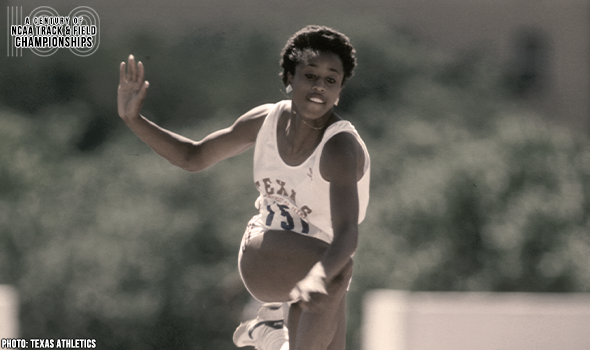
Texas’ Turner Soared To Triple Jump Greatness
Terri Turner was a two-time TJ champion at the NCAA DI Outdoor T&F Championships. When Turner won her 2nd title in 1986, she set an all-time world best of 13.66m (44-9¾).
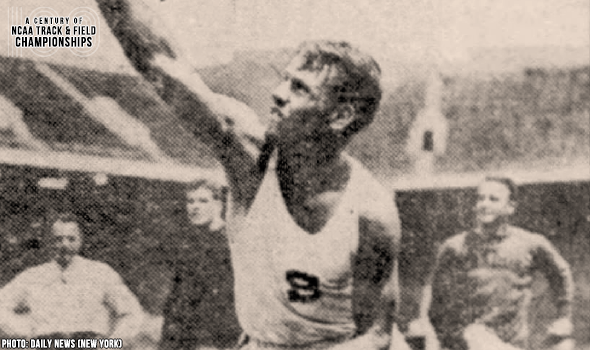
Stanford’s Rothert Starred In The Shot Put
Harlow Rothert won three consecutive shot put titles at the NCAA Outdoor T&F Championships between 1928 & 1930. He set meet records in both 1929 and 1930.

Indiana’s Kharun Set Javelin MR In 2003
Irina Kharun won the javelin title at the 2003 NCAA DI Outdoor T&F Championships with a meet record heave of 61.82m (202-10). It also helped her win by more than 30 feet!
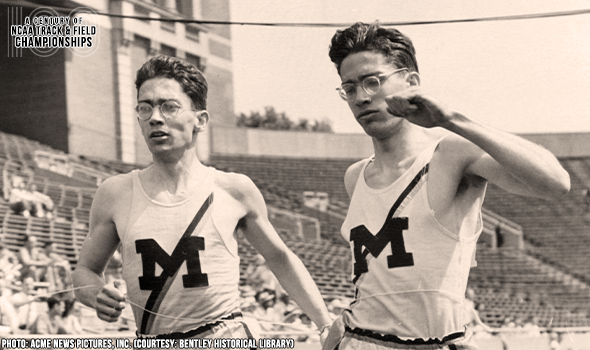
Hume Brothers Had Officials Seeing Double
Twins Robert & Ross Hume purposefully tied for the mile crown at the 1944 NCAA Outdoor Track & Field Championships. They tried again in 1945, but officials gave Ross the win.
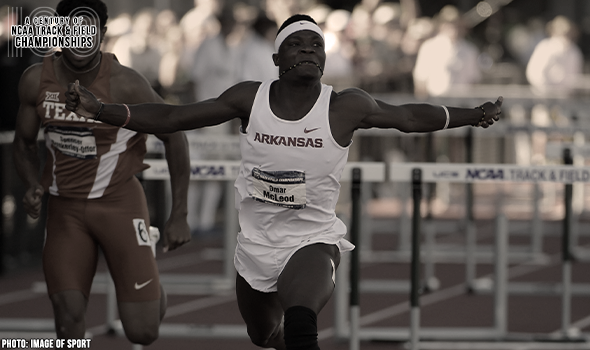
Woo Pig Sooie! McLeod Sizzled Track In 2015!
Omar McLeod clocked a sizzling 13.01 (+3.9) to win the 110HH at the 2015 NCAA DI Outdoor T&F Championships. Only one man had ever gone faster in meet history at the time.

Felicien Starred In The 100H At NCAAs
Perdita Felicien won back-to-back 100H titles at the NCAA Division I Outdoor T&F Championships in 2002 & 2003. She set a MR of 12.68 in the semifinals on the way to title No. 2.

Truly “Unbroken,” Zamperini Shined At NCAAs
Louis Zamperini set a meet record in the mile of 4:08.3 at the 1938 NCAA Outdoor T&F Championships. Zamperini, who also won the mile in 1939, saw his record last 15 years.

Hughes Soared To Three Consecutive HJ Titles
Tanya Hughes was the first woman to win three high jump titles at the NCAA Division I Outdoor T&F Championships. Hughes did so consecutively in 1991, 1992 & 1993.
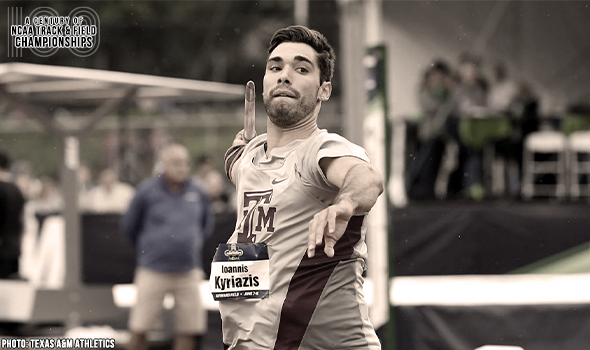
Kyriazis Made Point With Javelin In 2017
Ioannis Kyriazis set a meet record in the javelin of 82.58m (270-11) and won by more than 19 feet at the 2017 NCAA DI Outdoor T&F Championships.

Sharpe Bounded To Meet History In 1956
Bill Sharpe became the first man to eclipse the 50-foot barrier in the triple jump at the NCAA DI Outdoor T&F Championships in 1956. Sharpe won with his 15.36m (50‑4¾) effort.

